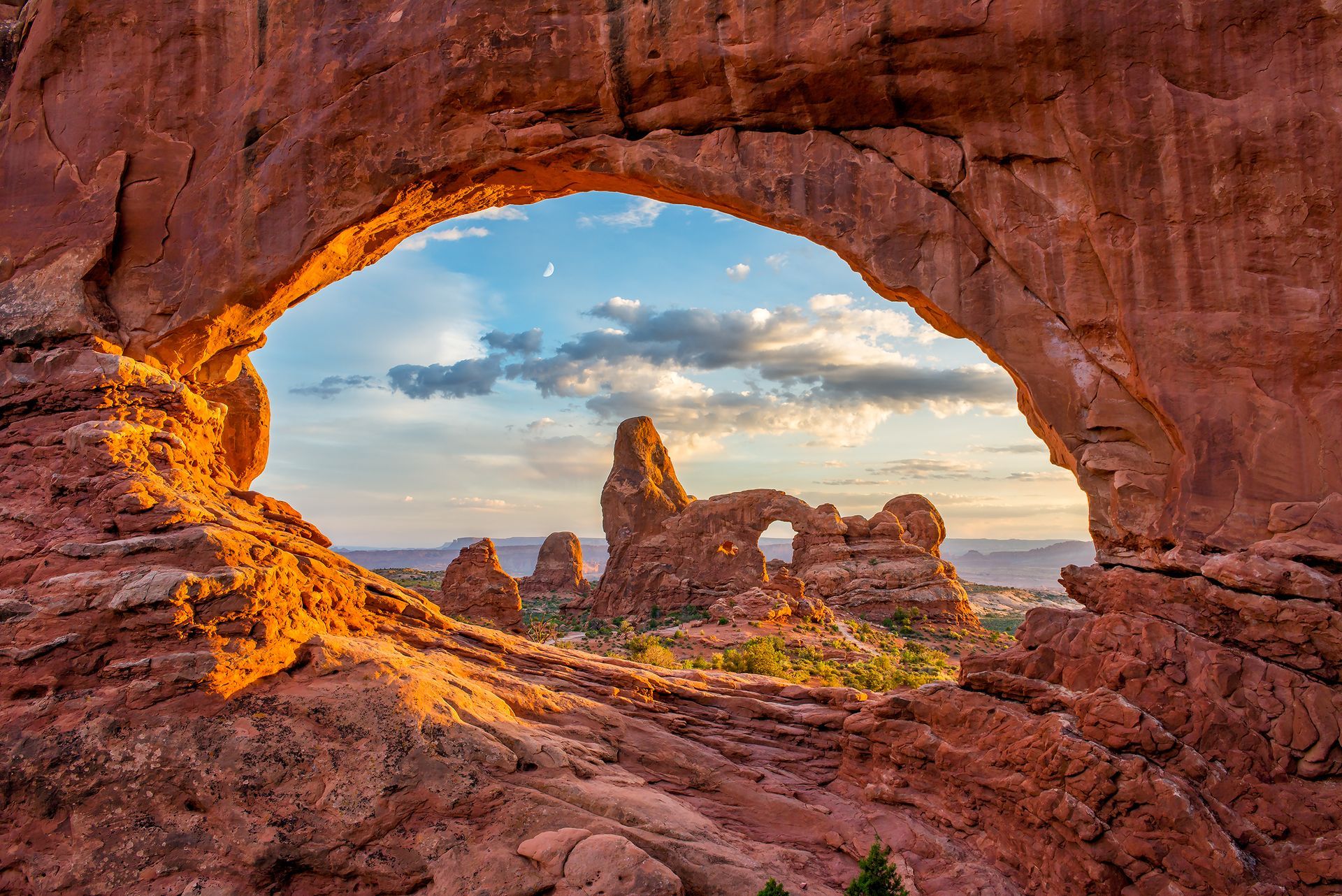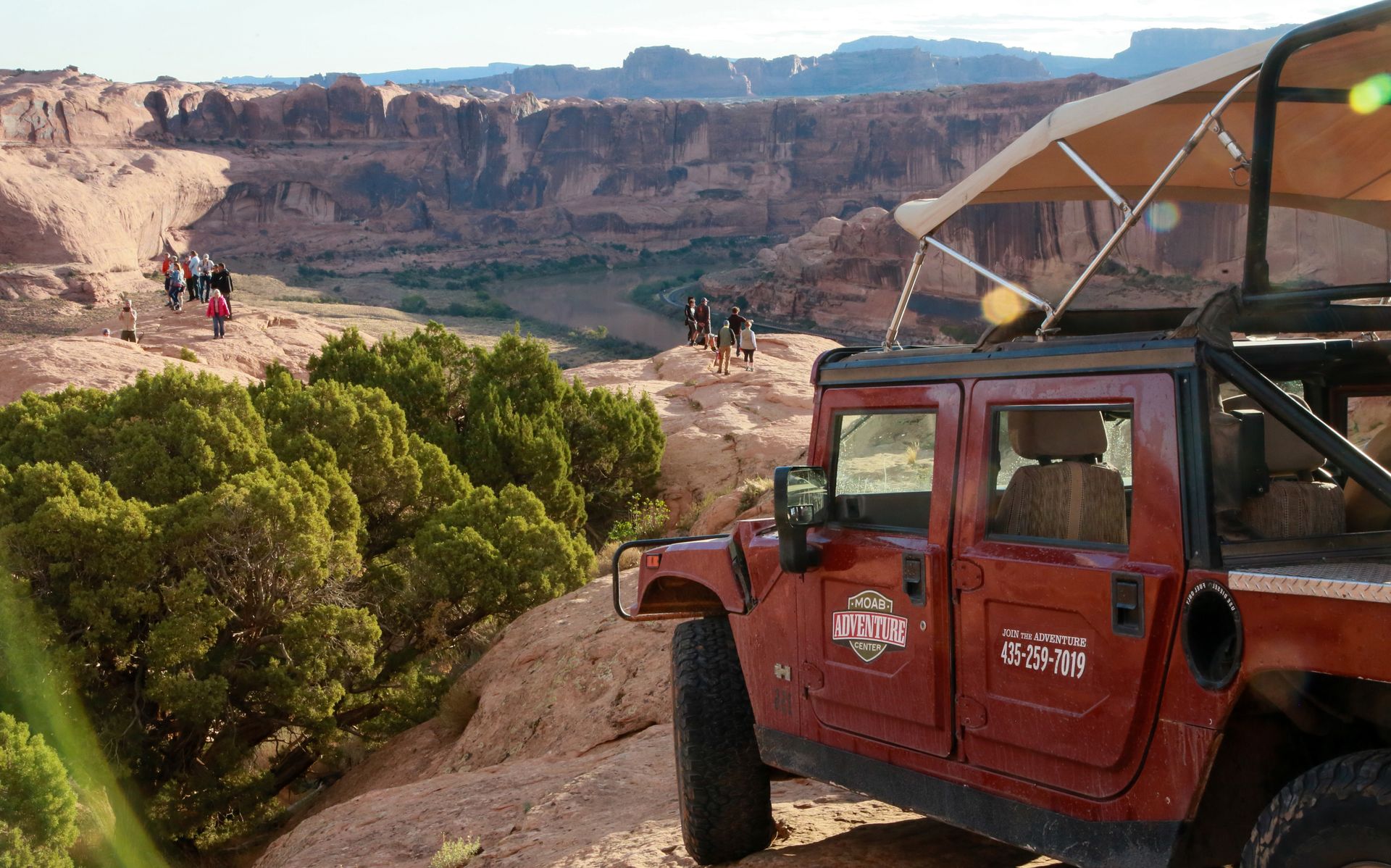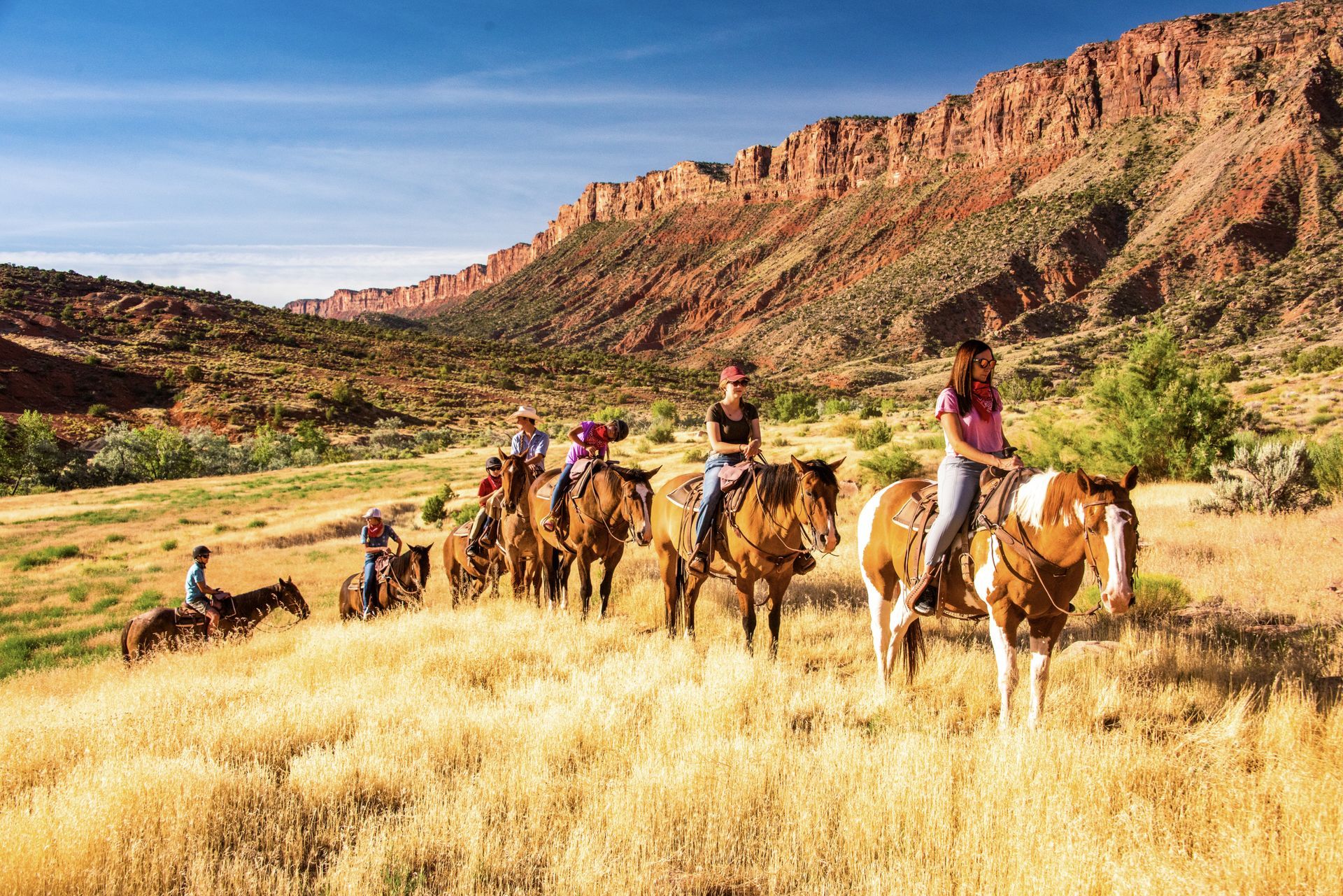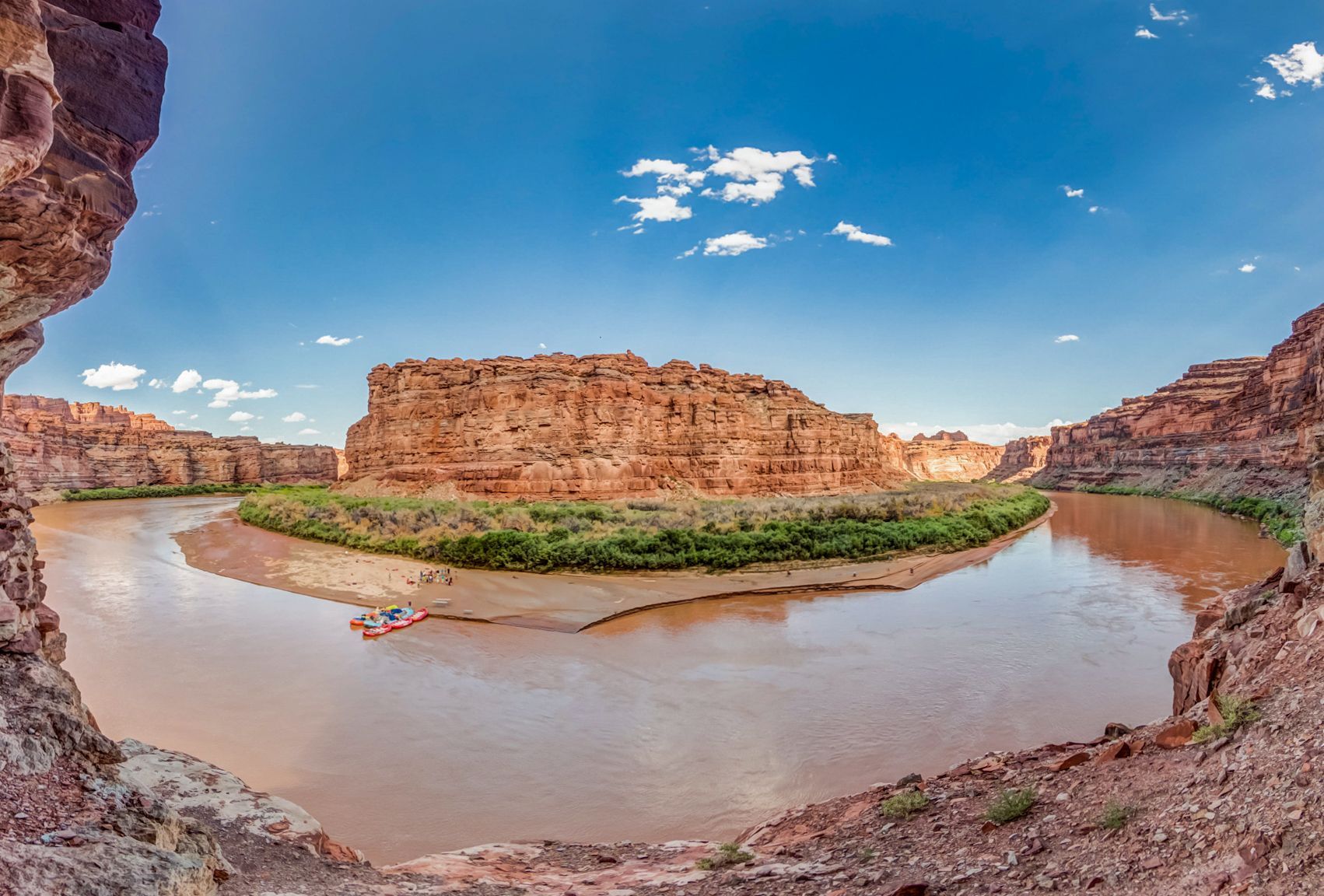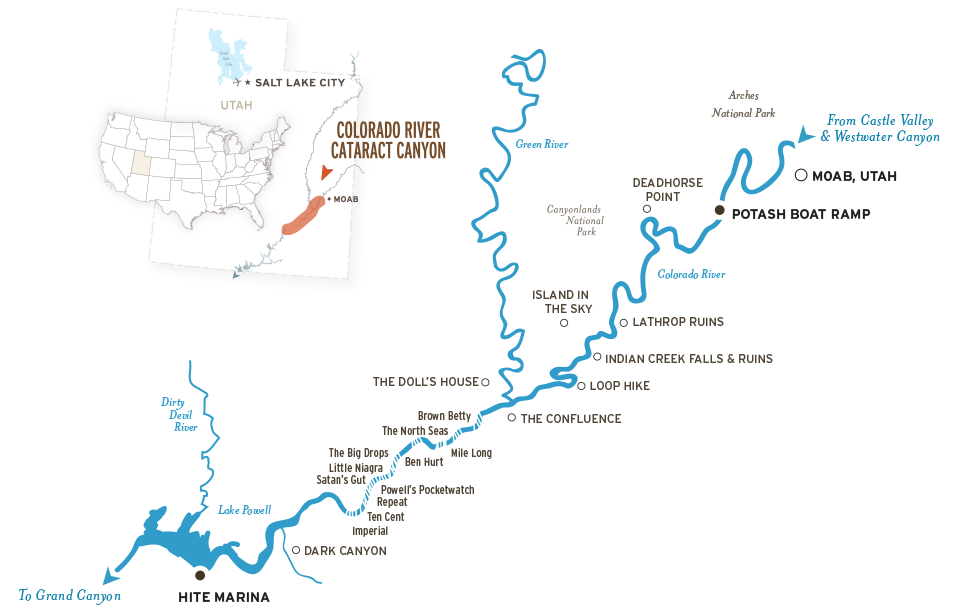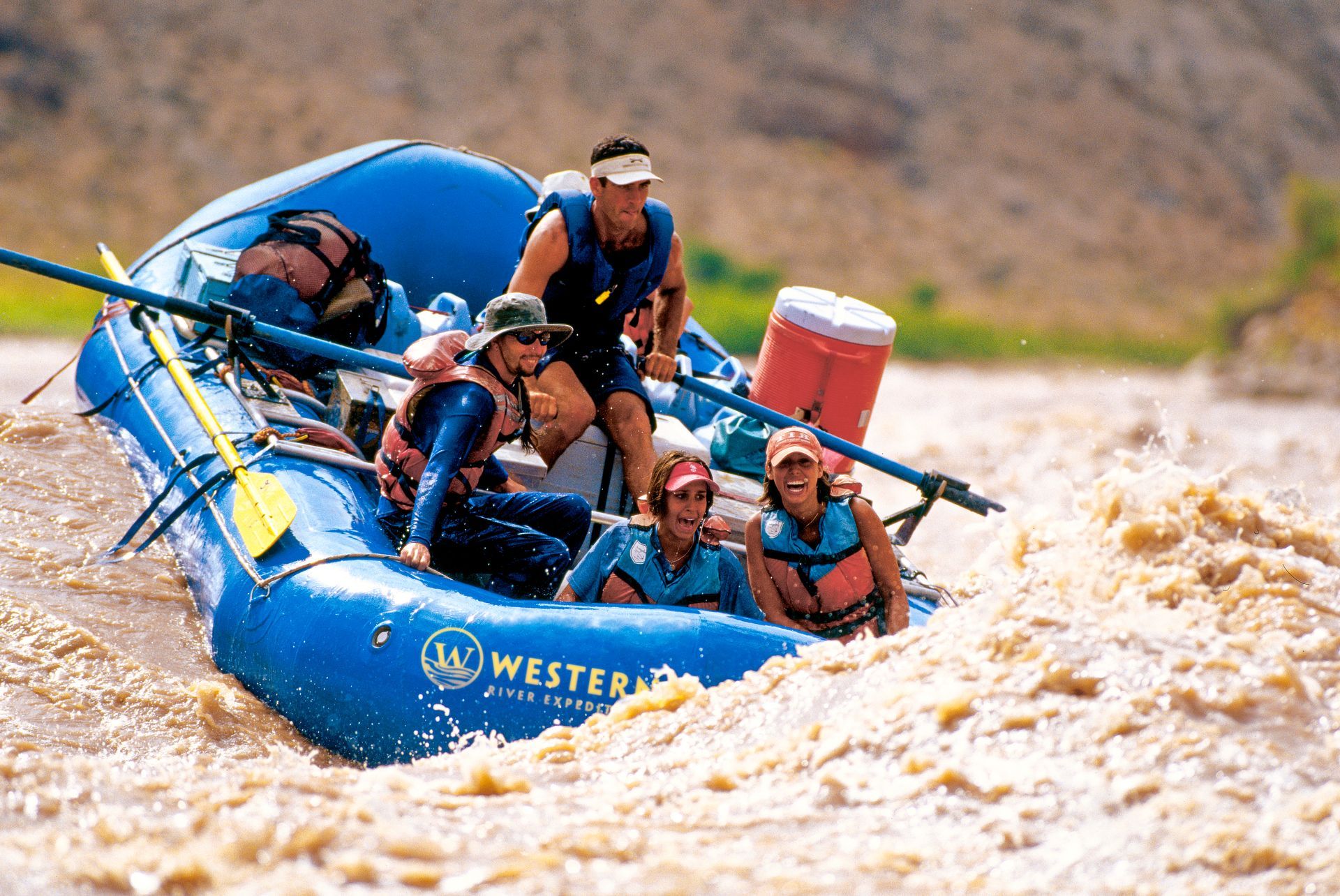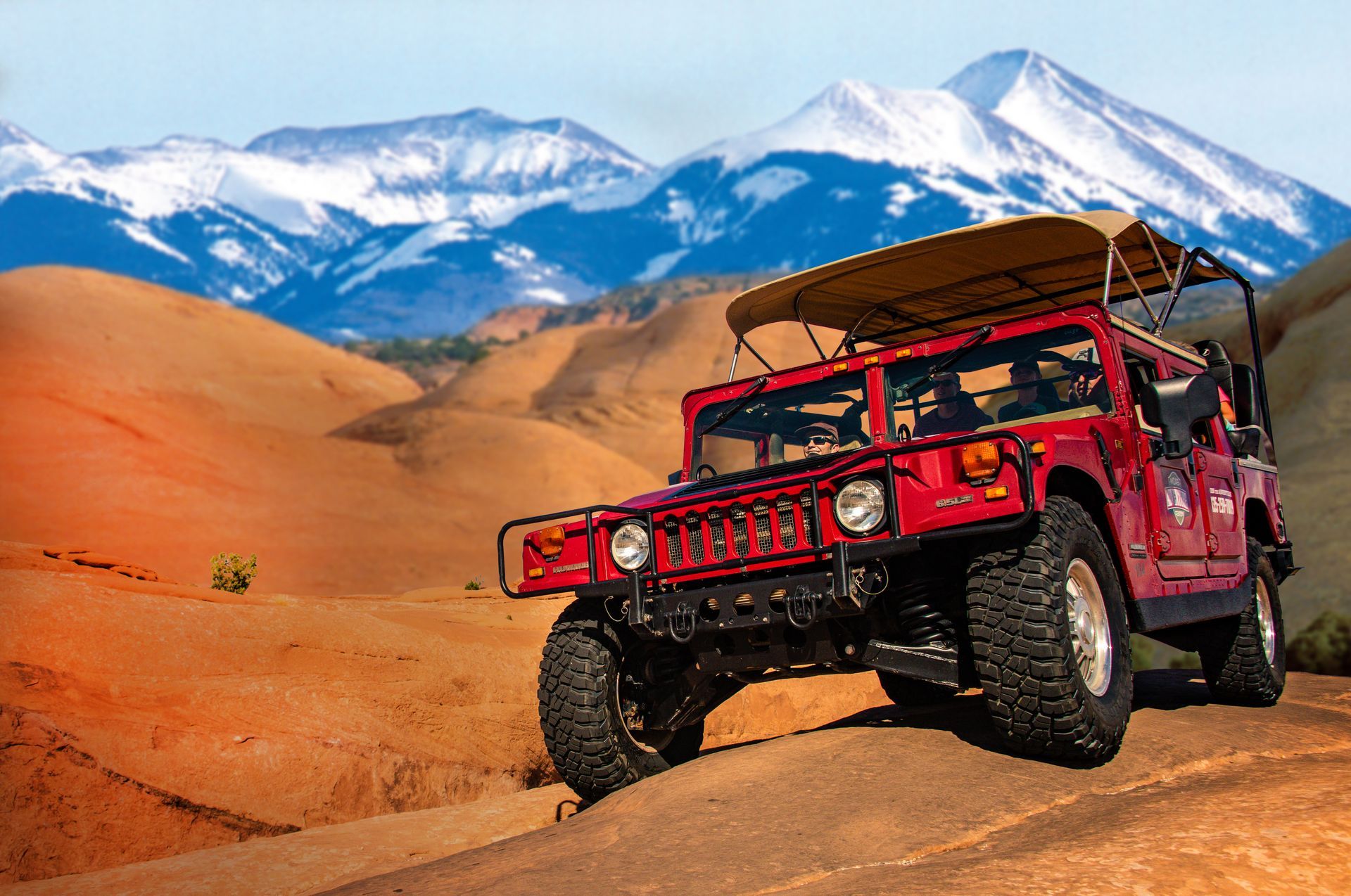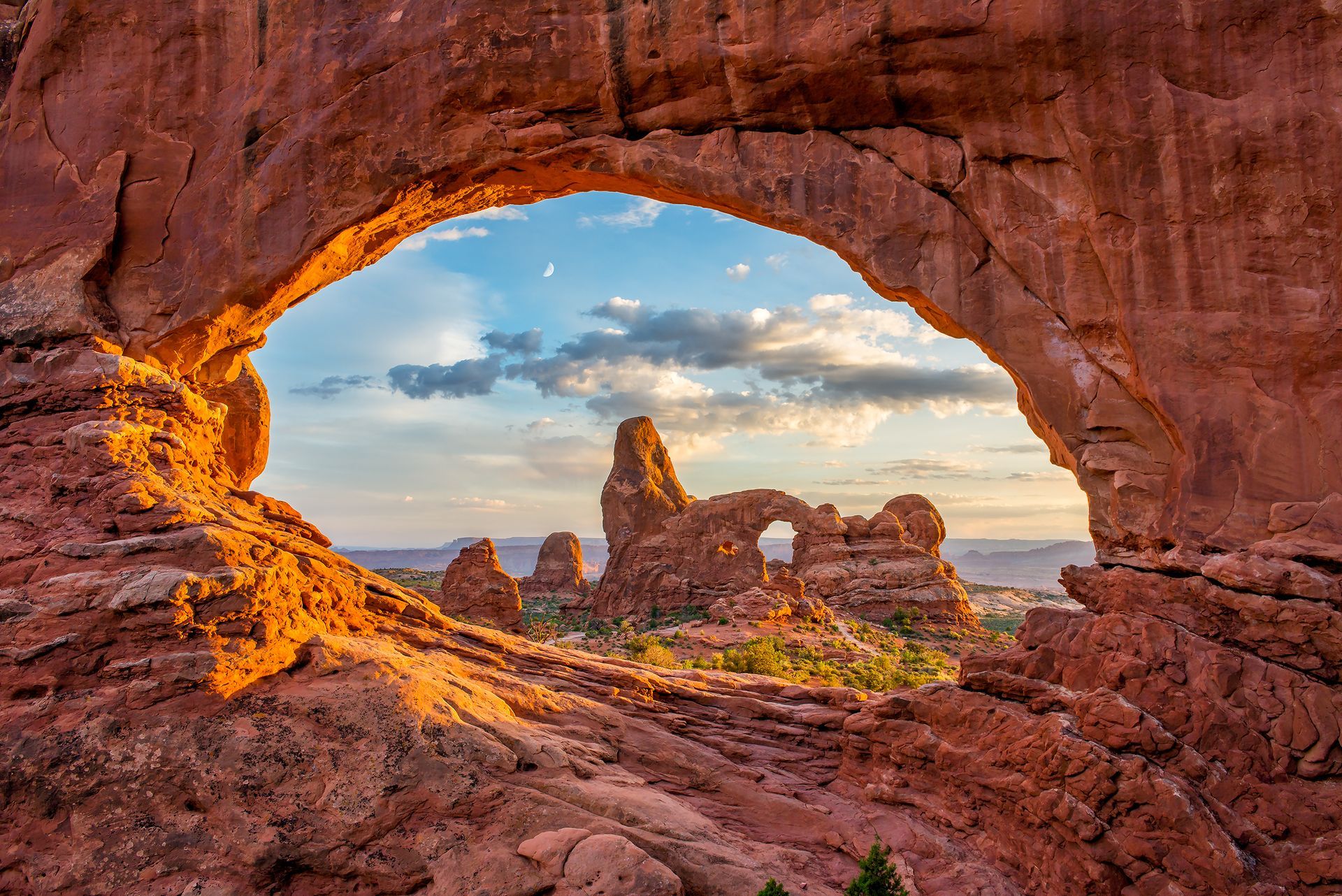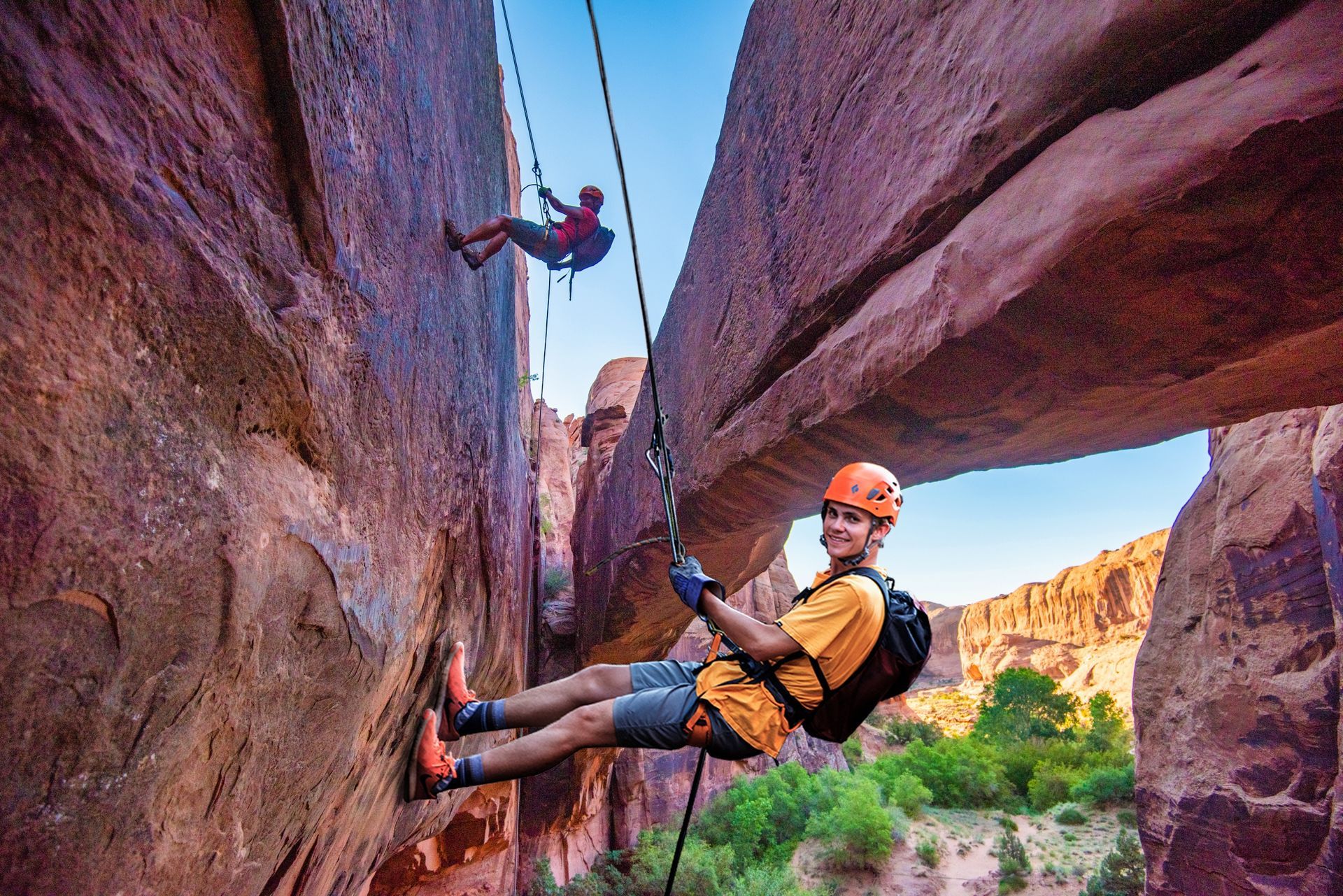CANYONLANDS NATIONAL PARK
ADULTS FROM
$2,050
VIP Guided Park Access
Arches National Park Guided Morning Tour
VIP access to Arches National Park: Expert guides, iconic sights, & mantle-worthy family photos without the hassle of parking or missing key sights.
- Duration: ~4 hrs
- Departures: Morning
- Season: Year Round
ADULTS 13+
$114
YOUTH 5-12
$93
Gravity-Defying Slickrock Fun
Hell's Revenge Slickrock Hummer Tour
Gravity-defying fun on Moab’s slickrock: Heart-pounding climbs and nonstop views in just two hours on the legendary Hell's Revenge Trail.
- Duration: ~2 hrs
- Departures: AM & PM
- Season: Feb – Nov
ADULTS 13+
$102YOUTH 5-12
$82Wild West Ride Through Red Rock
Castle Valley Horseback Ride 1.5 Hours
Scenic ride through red rock country: Gentle horses, iconic views, and classic Western vibes perfect for first-timers and families.
- Duration: ~1.5 hrs
- Departures: Varies
- Season: Apr - Oct
ADULTS 18+
$160
YOUTH 10-17
$160
Similar trips nearby...
Highlights
- Epic Rapids: Tackle North America's largest spring rapids in Cataract Canyon.
- Canyonlands Exploration: Raft through stunning districts like the Maze and Needles.
- Scenic Air Tour: Soar over Canyonlands' dramatic landscapes on the return.
- Adventure in Moab: Enjoy canyoneering, rock climbing, or exploring Arches National Park.
4-Day Cataract Canyon & Canyonlands National Park
What’s Included
- RAFTING Class III-V whitewater rafting
(rapids depend on water levels).
- HIKING Short walks to longer, more difficult hikes
(all optional).
- CAMPING EQUIPMENT
Cots, tents, sleeping bags, chairs, and water-resistant bag.
- MEALS
Guides prepare all meals for you between departure and return.
- GROUND TRANSFER
Transportation from Moab hotel to the river to begin trip.
- SCENIC FLIGHT
Return flight over Canyonlands NP and shuttle to Moab.
What’s Not Included
- Guide appreciation
Gratuities for your guide are at your discretion and are always appreciated. A common practice is 10-20% of the tour cost.
- Lodging
Moab hotel stay before or after trip
- Taxes & Fees
Any applicable taxes and fees
Important:
Many guests wish they’d planned more time in Moab! Your 4-Day Cataract trip includes a scenic flight, but don’t miss out on other iconic adventures—like Arches National Park, a Hummer Safari, zip lining, or hot air ballooning. Book early to make the most of your stay!
Epic Whitewater and Wild Beauty in the Heart of Canyonlands National Park
Venture deep into Canyonlands National Park on a four-day rafting journey through Cataract Canyon. Begin on calm waters winding past towering red cliffs, then feel the surge as the Colorado River roars into legendary whitewater. Explore hidden side canyons, ancient ruins, and star-filled desert nights before soaring back to Moab on a scenic return flight over Canyonlands and the wild landscape you’ve just conquered.
DAYS 1 & 2: JOURNEY INTO CANYONLANDS
Meet your guides in Moab and take a short ride to the river launch. As the rafts push off, the noise of the world fades and the calm rhythm of the Colorado takes over. Drift between towering red cliffs, stopping for short hikes to ancient ruins, petrified wood, and hidden side canyons carved by time. Camp each night on soft riverside sand while your guides prepare fresh-grilled dinners and Dutch-oven desserts beneath a vast desert sky alive with stars.
DAY 3: LEGENDARY WHITEWATER
The canyon deepens — and the river awakens. Whitewater builds through a series of legendary rapids: Capsize, Little Niagara, and the towering Big Drops, where powerful waves crash between 2,000-foot canyon walls. Laughter and spray fill the air as you surge through each rapid, heart pounding and spirits soaring. The current eases in the afternoon, giving you time to float, swim, and share stories as your guides prepare another hearty riverside feast.
DAY 4: LAKE POWELL & FLIGHT OVER CANYONLANDS
The final stretch brings one last burst of excitement with rapids like Imperial and Waterhole Canyon, before the river begins to calm and widen toward Lake Powell. After lunch on the beach, board a small-plane flight for a spectacular return to Moab. The route soars over Canyonlands National Park, offering an awe-inspiring aerial view of the twisting canyons, hidden side valleys, and the mighty river you’ve just conquered — a fitting finale to four unforgettable days in the heart of the Southwest.
★★★★★ 4.9 Out of 7412 Reviews
4-Day Cataract Canyon Details
INCLUDES
All meals, scenic flight, camping equipment
DURATION
4 Days, 3 Nights
BEGINS & ENDS
Marriott Springhill Moab
DEPARTURES
7:30 AM (Check Confirmation)
GROUP SIZE
Up to 30 guests
MINIMUM AGE
12 years old (May-June)
10 years old (July)
"Guides Went Above & Beyond"
With a son who has a serious allergy, I was nervous about a remote Cataract Canyon trip. The team went above and beyond—sharing menus, answering every question, and checking on him throughout. Rapids, food, and guides were all amazing. Already planning a return!
Linda, North Carolina
"Highly Recommend Western"
Our 4-day Cataract Canyon trip was fantastic! Every staff member—from shuttle to guides—went out of their way to keep us safe, comfortable, well-fed, and having fun. Highly recommend Western River Expeditions!
Pat, New York
"The Highlight of Moab Vacation"
Our family’s 4-day Cataract Canyon rafting trip was the highlight of our vacation—spectacular scenery, fun and knowledgeable guides, and an unforgettable mix of adventure with horseback riding and zip-lining too. Truly amazing!
John, Rhode Island
The rafts you’ll ride in Cataract Canyon are chosen to match the river’s mood. In high-water spring flows, we use our signature J-Rig, a large, motorized raft engineered for stability and comfort in some of the biggest waves in North America. Later in the season, when the river runs at more moderate levels, trips are run with a combination of oar rigs, where your guide rows and you relax in the front, and paddleboats, where you can grab a paddle and help power through the rapids. This mix ensures every guest gets the right balance of adrenaline, participation, and pure canyon immersion.
Cancellations
Book With Confidence
Direct Booking Price Guarantee
Book directly on moabadventurecenter.com or call our office to get tips on adding to your vacation package and making the most of your time in Moab.
Expert Guides, Every Time
Our guides are trained professionals—knowledgeable, personable, and passionate about making your adventure unforgettable.
Award-Winning Adventures
Proud recipient of Utah’s “Best of State” award year after year, a reflection of our commitment to outstanding service and unforgettable experiences.
Frequently Asked Questions
Who is the Cataract Canyon 4-Day Classic rafting trip best suited for?
The 4-Day Classic is ideal for travelers who want to fully immerse themselves in Canyonlands National Park while experiencing some of North America’s most powerful rapids. Families with teens, adventurous couples, and active groups love the combination of rafting, hiking, and camping under the stars. With a minimum age of 12 (May-June) and a minimum age of 10 (July-September), this trip is best for families with tween and teens, adults traveling together, or solo travelers.What are the physical requirements for a Cataract Canyon trip?
Guests should be in reasonable health and able to participate in an active wilderness trip. You’ll need to fit a Type V whitewater life jacket (minimum 50 lbs; chest size up to 52"), hold on during Class III–V rapids, and be able to swim to the raft or shore if you fall in. At camp, you’ll carry your own dry bag across sandy or uneven ground. Short side hikes are part of the trip and require mobility over rocky terrain.How does the 4-Day Classic compare to the 2-Day Express?
Both trips cover the same 100-mile stretch of the Colorado River through Cataract Canyon. The 2-Day Cataract Canyon Express is designed for speed, using motorized boats to move quickly to the rapids. The 4-Day Cataract Canyon Classic takes a slower, more traditional approach, using oar and paddle rafts for much of the season and adding time for side hikes, extra stops, and camp life. If you want to focus on the biggest rapids in the shortest timeframe, choose the 2-Day Express; if you want a deeper, more relaxed experience, the 4-Day Classic is the way to go.What kind of rapids will I encounter in Cataract Canyon?
Cataract Canyon is famous for some of the largest whitewater in North America. Depending on the season, you may run up to 30 rapids ranging from Class III to Class V, with legendary drops like The Big Drops, Little Niagra, Satan’s Gut, Capsize, and The Claw. The power of these rapids is amplified in spring during peak runoff. While intense, these sections are balanced by calm stretches that allow time for swimming, relaxing, and taking in the scenery.What type of rafts are used on the Cataract Canyon 4-Day Classic trip?
The raft type depends on the season and water flows. In the high-water months of spring, the trip often uses patented J-rigs, large motorized rafts specifically engineered to provide stability and safety in Cataract’s biggest waves. Later in the season, when water levels are more moderate, the trip is run with a combination of oar-powered rafts rowed by guides and paddle rafts where guests can join in the action. This mix offers both a relaxed pace through calm stretches and exciting teamwork in the rapids.How long is the 4-Day Classic and what’s included?
The trip lasts four days, with 3 nights of camping on the river, and covers roughly 100 miles of river through Canyonlands National Park. It includes all rafting and safety equipment, camping gear (tents, sleeping bags, cots), and all meals from lunch on the first day through lunch on the final day. Transportation to the river and a scenic flight from Lake Powell back to Moab is also included. All you need to bring are personal items and clothing appropriate for the season, and a detailed packing list is provided after booking.What is the return flight like from Lake Powell back to Moab?
At the end of the 4-Day Classic, the trip concludes near Lake Powell where you’ll board a small aircraft (typically a 5–9 passenger plane) for the return to Moab. The flight lasts about 40 minutes and is included in your trip package. In addition to saving several hours of driving through remote desert roads, the flight provides unforgettable aerial views of Canyonlands National Park, the Colorado River, and Lake Powell. It’s both a practical transfer and a scenic highlight of the trip.Do I need previous rafting or camping experience?
No prior rafting or camping experience is required. Our professional guides provide thorough safety orientations, guide hikes, and prepare delicious meals riverside. Guests should be in reasonable health, comfortable around water, and ready for Class III–V rapids. Many first-time rafters and campers find the 4-Day Classic an excellent way to experience both adventure and the outdoors with expert support.What is camping like on the Cataract Canyon Classic?
Each night is spent along the river’s edge, often on sandy beaches with red rock walls and star-filled skies as your backdrop. All camping gear is provided, and guides take care of meals, and camp logistics. Meals include hot breakfasts, hearty lunches, and multi-course dinners, often prepared with fresh ingredients right at camp. The experience combines the simplicity of the outdoors with the comfort of a well-organized trip.Can I bring a CPAP machine on the river?
Yes, but you must be prepared to complete the trip even if your machine or batteries fail, since evacuations are reserved for true emergencies. Bring enough charged batteries for all nights, and let us know in advance so we can allocate space for your device.What kind of food is served, and can you handle dietary needs?
Meals are hot, hearty, and buffet-style, with fresh breakfasts, picnic-style lunches, and multi-course dinners prepared by your guides. Vegetarian options and gluten-free breads or tortillas can usually be provided if requested ahead of time. For strict diets or severe allergies, please bring supplemental foods that don’t require guide preparation.How are food allergies handled on Cataract trips?
Please tell us your allergies and severity before the trip. We do our best to set aside portions before adding nuts, dairy, or other common ingredients, but we cannot guarantee an allergen-free kitchen. Guests with severe allergies should bring at least two epinephrine auto-injectors and additional safe snacks.What drinks are provided, and can I bring my own?
Cold water and flavored drink mix are provided throughout the trip. Bring a refillable water bottle for frequent refills. You may also bring a small supply of canned beverages like soda or beer. Glass containers are not allowed.Can I bring my own snacks on the river?
Yes. We provide snacks daily, but you’re welcome to bring favorites, especially for kids or special diets. Small, sealed packages are best, and we can store them in dry or cold boxes.What’s a typical day like on the Cataract Canyon Classic?
Days start with hot drinks and breakfast, followed by breaking camp and rafting through calm stretches and rapids. Expect 60–90 minute river legs, with stops for swimming, hikes, snacks, and a riverside lunch. By late afternoon, we select a campsite, and guides set up kitchen and bathroom areas while you set up your personal camp. Evenings include appetizers, dinner, stories, and stargazing before bed.What bathroom facilities are available?
In camp, we set up a portable toilet system in a private location. During the day, guides make “pit stops” for liquid waste in the river, per regulations. If you need to go #2 emergencies during the day, guides will provide supplies and instructions for a discreet, clean process.
What should I do about feminine hygiene during the trip?
Tampons are usually easiest since you’ll be in and out of water. Bring your preferred products, plus zip-bags for discreet disposal. Guides will make stops as needed, and camp toilets are available morning and evening.What if there’s a medical situation on the river?
Guides are trained in wilderness medicine and carry first-aid kits and satellite communications. Serious medical issues may require helicopter or boat evacuation, but response times vary depending on conditions. Guests should be in reasonable health to join the trip.How do I bathe or wash up on the river?
Most guests rinse off in the river with biodegradable soap, a washcloth, and a quick-dry towel. Brushing teeth should be done with drinking water provided by guides. Clothing can be rinsed and dried at camp. Lotion, conditioner, and lip balm help with the dry desert air.Do I need a wetsuit for Cataract Canyon?
In spring, water can be cold, and rain suit or splash jackets are essential. By summer, quick-dry clothing, a rain shell, and secure footwear are all you’ll need.
Should I bring cameras or electronics on the trip?
We strongly suggest leaving laptops, tablets, and other large electronics at home. Heat, sand, and water can easily damage them, and there’s no way to charge or protect them in the canyon. A cell phone or small camera is fine for photos, but keep it simple—there’s no cell service, and part of the experience is disconnecting from the outside world. If you bring a device, use a true waterproof case with a strap, and consider a small power bank. Drones are not permitted in Canyonlands National Park.What do I do with extra luggage during my trip?
We can store extra bags securely in Moab. Only bring what fits in the waterproof dry bags provided.How do overnight bags and day bags work?
Each guest receives two waterproof dry bags. A large overnight bag holds your camp gear and clothing and is only accessed at camp. A smaller day bag rides with you on the raft and should carry sunscreen, water bottle, rain jacket, snacks, medications, and a waterproof camera.When does the Cataract Canyon 4-Day Classic run, and what season is best?
The trip generally operates from May through September. Spring and early summer often bring higher, more powerful rapids, while late summer and early fall offer calmer flows and warmer water, making swimming and floating more enjoyable. Both seasons provide incredible experiences—the best choice depends on whether you want the biggest water or a more laid-back pace.Can I swim during the Cataract Canyon trip?
Yes, but swimming is always at the guide’s discretion. The calm water on the first couple of days is perfect for swimming and floating. The calm stretches of river between rapids are also perfect for floating in your life jacket, especially in the warmer months of summer. During high water, swimming is more limited due to the stronger current and cooler water.How far in advance should I book the Cataract Canyon 4-Day Classic?
Because of limited departures and high demand, especially in May and June, the Classic often sells out months in advance. Booking early ensures your spot and gives you more flexibility to plan the rest of your Moab adventure around this once-in-a-lifetime trip.
Not finding your answer? Contact us! We’re happy to chat.
Extend Your Adventure in Moab, Utah
Your multi-day journey may be the centerpiece of your trip—but it doesn’t have to be the only chapter. Many guests choose to add extra adventures before or after their trip, turning a single experience into a complete Moab adventure. However long you’re here, we’ll help you fill every moment with unforgettable stories and memories that last a lifetime.
VIP access to Arches National Park: Expert guides, iconic sights, & mantle-worthy family photos without the hassle of parking or missing key sights.
- Duration: ~4 hrs
- Departures: Morning
- Season: Year Round
ADULTS 13+
$114
YOUTH 5-12
$93
Gravity-defying fun on Moab’s slickrock: Heart-pounding climbs and nonstop views in just two hours on the legendary Hell's Revenge Trail.
- Duration: ~2 hrs
- Departures: AM & PM
- Season: Feb – Nov
ADULTS 13+
$102YOUTH 5-12
$82Scenic ride through red rock country: Gentle horses, iconic views, and classic Western vibes perfect for first-timers and families.
- Duration: ~1.5 hrs
- Departures: Varies
- Season: Apr - Oct
ADULTS 18+
$160
YOUTH 10-17
$160
Likely to sell out
❤ Top rated ★★★★★ 4.9 (7412)
4-Day Cataract Canyon & Canyonlands National Park
An Epic Whitewater Journey
ADULTS 16+
$2,050
YOUTH 10-15
$1,500
- Trusted For Decades
We've been honing the perfect adventure tour since 1961. - Voted Best of State 22 Years
Voted best adventure company in Utah for 22 consecutive years running.
Need Help? Ask a Question
